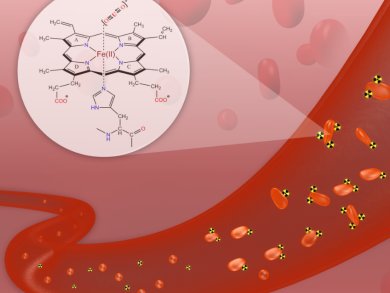The radioactive uranyl ion (UO22+) is a contaminant that is discharged into the environment mainly from nuclear-power reactor effluent. The mechanism by which accumulated UO22+ in blood cells might damage the oxygen-transporting function of blood is an important subject for investigation.
Junbai Li and his group at the Northwest Institute of Nuclear Technology, Shaanxi, China, have explored this by using hemoglobin (Hb) microspheres, fabricated by the porous template covalent layer-by-layer (LbL) assembly, as artificial oxygen carriers and blood substitutes. The microspheres were functionalized with iron oxide nanoparticles so that they could be used in magnetically assisted chemical separation.
The team found that UO22+ was easily adsorbed onto the magnetic Hb microspheres and that it destroyed the structure and oxygen-transporting capability of the microspheres. This is an important result, as it was not clear before whether UO22+ could have this effect. However, in view of this high adsorption capacity for UO22+, the assembled magnetic Hb-based microspheres may offer a highly effective way for the removal of UO22+ (or other metal toxins) from the radiation-contaminated bodies or from nuclear power reactor effluent before discharge into the environment.
- High Impact of Uranyl Ions on Carrying–Releasing Oxygen Capability of Hemoglobin-Based Blood Substitutes,
Li Duan, Lili Du, Yi Jia, Wenyuan Liu, Zhichao Liu, Junbai Li,
Chem. Eur. J. 2014.
DOI: 10.1002/chem.201405439




